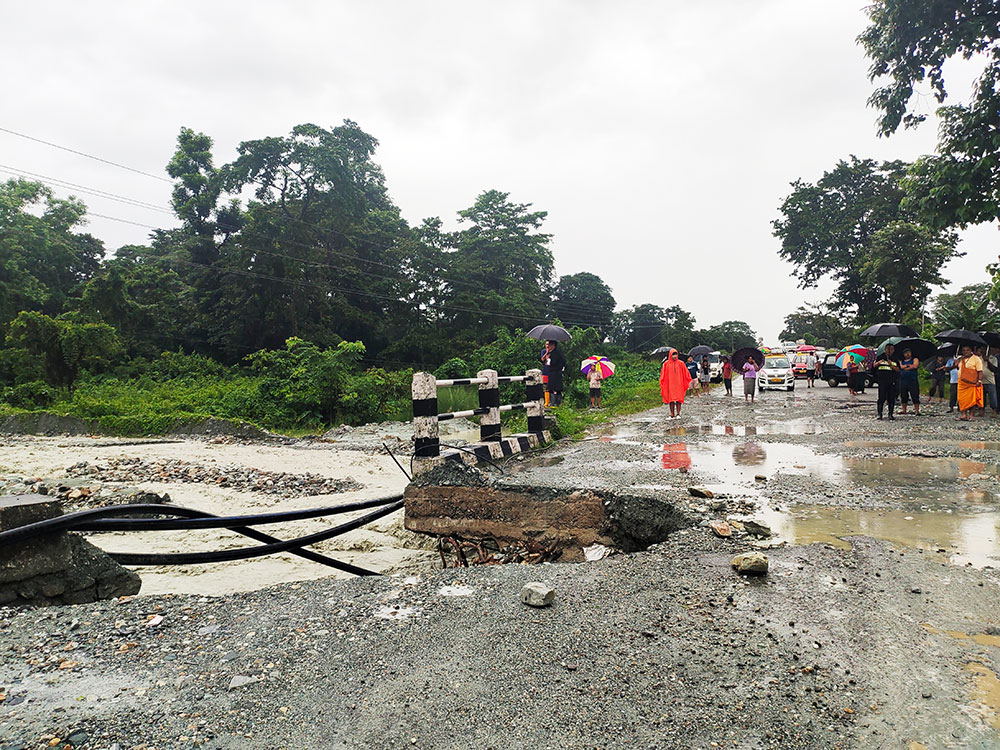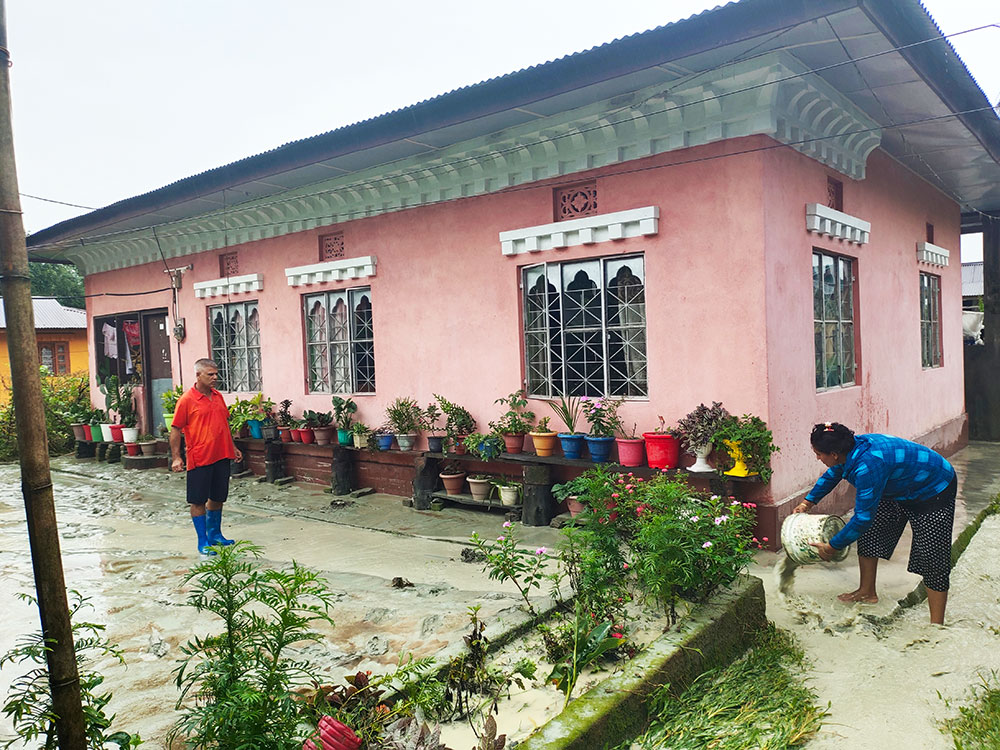… as swollen Shetikhari stream threatens their lives again
Lhakpa Quendren
Gelephu – Settlements along the banks of Shetikhari stream in Gelephu gewog live under constant threat of flooding every monsoon without proper flood mitigation measures.
In July and August, the stream has flooded three times. After heavy rainfall yesterday morning, the swollen stream gushed into 13 households along the banks depositing mud. The incident, which occurred at around noon, damaged about three metres of the culvert along the Gelephu-Zhemgang highway. This culvert was temporarily restored after being damaged by the recent flood.
Residents said that they worry about living in constant fear due to heavy rain leading to a rise in the water level of the stream. They say that in the absence of permanent flood prevention measures, these challenges will forever burden them.


Swollen Shetikhari stream affects nearby settlements
One of the affected residents, Harilal Katel, said that the frequent flooding has left the residents worried about the potential floods in the future. “The situation has worsened this year, and we continue to live in fear throughout the monsoon season.”
Another resident, Yamuna Katel, said, she has to bring the labourers to clear the surroundings almost every monsoon. “During the recent flood, I had to bring four labourers from the neighbouring town of India to clear the mud around the house because it is difficult to find local labourers.”
Another resident in Gelephu gewog said that a lasting solution is needed to reduce the flood risks. “This problem will remain unless a properly designed embankment is constructed. Addressing this issue should be prioritised.”
Gelephu Mangmi Sonam Dakpa said that the floods and elephant attacks remain the biggest challenges in the gewog. He said that there have been no floods caused by the Shetikhari stream since the first incident in 2016.
Some residents also alleged the Bhutan Football Federation for diverting the water from the upstream from the original flow of the river. They attribute this change to the construction of a football ground and a hostel for the women’s national team along the initial riverbanks.
The Gelephu gewog administration deployed four chain excavators for the dredging of the river, including at the upstream area near the Phurpa Lhakhang, where the swollen stream caused the division of water. The regional Department of Surface Transport office in Sarpang also deployed a JCB.
De-suups helped the affected households in relocating their belongings to safer houses.


